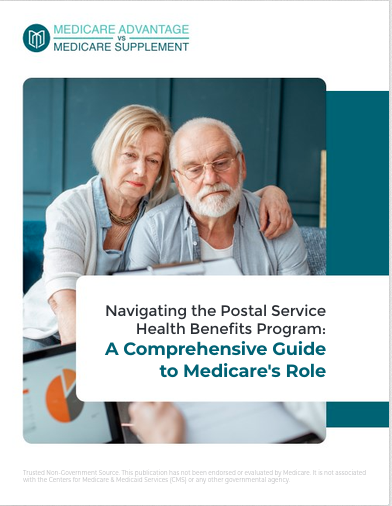Key Takeaways
- While Medicare Advantage plans offer appealing benefits, they may not suit everyone—especially those with specific medical conditions.
- Understanding the limitations of these plans can help you make better decisions about your healthcare coverage.
Understanding Medicare Advantage Plans
Medicare Advantage plans are a popular alternative to Original Medicare. These plans, also called Medicare Part C, are provided through private insurers approved by Medicare. They combine hospital insurance (Part A) and medical insurance (Part B), and often include prescription drug coverage (Part D) and additional benefits like vision, dental, and hearing care.
However, the allure of extra benefits sometimes masks drawbacks, especially for those with certain medical conditions. It’s essential to dig deeper before signing up for one of these plans.
Restrictions on Provider Networks
One of the most significant challenges with Medicare Advantage plans is the restricted provider networks. Unlike Original Medicare, which allows you to see any provider that accepts Medicare, these plans often limit you to a network of doctors, specialists, and hospitals.
How This Impacts Certain Conditions
If you have a complex medical condition requiring specialists, you may face limited options under your plan. Out-of-network care is either not covered or comes with significantly higher out-of-pocket costs. This can delay or complicate access to the specific expertise you might need.
Prior Authorizations: A Bureaucratic Hurdle
Many Medicare Advantage plans require prior authorizations for specific treatments, tests, or prescriptions. This means your doctor must get approval from the insurance company before you can proceed with care.
Challenges for Chronic Conditions
For conditions requiring ongoing care, such as diabetes or rheumatoid arthritis, these approvals can create delays. Imagine needing a critical diagnostic test or switching to a new medication only to face delays due to bureaucratic red tape.
High Out-of-Pocket Costs
Medicare Advantage plans often tout lower monthly premiums compared to Original Medicare combined with supplemental insurance. While this might seem cost-effective upfront, it’s important to understand how costs add up.
Maximum Out-of-Pocket Limits
Each Medicare Advantage plan sets a maximum out-of-pocket limit for services. Once you hit this limit, the plan covers 100% of approved services. However, the limits can vary widely, with some plans having thresholds of several thousand dollars annually. For those managing costly medical conditions, these expenses can accumulate quickly, especially if you need frequent specialist visits or hospitalizations.
Coverage Gaps and Exclusions
Medicare Advantage plans are required to cover everything that Original Medicare does, but the way they structure this coverage can vary. Some plans may have more limited options for specific therapies or treatments.
Specialized Care Restrictions
For conditions like Parkinson’s, cancer, or heart disease, access to cutting-edge treatments or specialized care centers might be restricted under some plans. This limitation could mean missing out on newer, potentially life-saving therapies not fully covered by your plan.
Emergency Care Limitations
You’d think emergency care would be straightforward, but with Medicare Advantage plans, there can be unexpected complications.
What You Need to Know
While emergency care is typically covered regardless of your location, follow-up treatments may not be if they are out-of-network. For instance, if you’re traveling and require ongoing care after an emergency, you might face hurdles getting it covered under your plan.
Limited Flexibility for Frequent Travelers
If you split your time between multiple states or travel often, Medicare Advantage plans can be less accommodating than Original Medicare. Many plans operate on a regional basis, and receiving care outside your network could lead to high costs.
Seasonal Residents Beware
Snowbirds—those who spend winters in warmer climates—may find themselves juggling different providers or struggling with out-of-network rules when they’re away from their home region. This lack of portability can be particularly frustrating if you require routine care or treatments while traveling.
Prescription Drug Coverage Challenges
Although many Medicare Advantage plans include Part D prescription drug coverage, it’s important to examine the formulary (list of covered drugs) closely.
Medication Exclusions
Some plans have limited formularies, meaning your specific medications may not be covered or may require higher copayments. This can be a significant issue for individuals managing conditions like hypertension, asthma, or mental health disorders, where consistent medication is vital.
Step Therapy
Another potential pitfall is step therapy, where you must try less expensive drugs before a plan approves coverage for a more expensive prescription. This process can delay effective treatment, particularly for conditions requiring immediate intervention.
Comparing Costs: Medicare Advantage vs. Original Medicare
It’s tempting to focus on monthly premiums, but the total cost of care is what truly matters—especially for those with chronic or complex medical needs.
What to Consider
- Deductibles and Copayments: Some Medicare Advantage plans require you to pay a deductible for hospital or medical services, in addition to copayments for each visit or treatment.
- Out-of-Network Costs: Unlike Original Medicare, which covers most services nationwide, Medicare Advantage plans often leave you with steep costs if you go outside the network.
A Quick Example
Someone managing a chronic illness requiring frequent doctor visits might pay less in premiums but face higher out-of-pocket expenses overall under a Medicare Advantage plan compared to pairing Original Medicare with a Medigap policy.
Navigating Plan Changes
Medicare Advantage plans can change their benefits, provider networks, and costs annually. If your medical needs are stable, this might not seem like a problem. But if you have a chronic or evolving condition, unexpected changes could leave you scrambling for coverage.
Annual Enrollment Period Challenges
Every year, you’ll need to review your plan during the Annual Enrollment Period (October 15 to December 7) to ensure it still meets your needs. For those with complex health conditions, this can feel like an additional burden when you’re already managing your care.
Is Medicare Advantage Right for You?
Choosing a Medicare Advantage plan involves weighing the pros and cons based on your specific medical needs. These plans work well for some people, especially those who are generally healthy and value additional benefits. However, if you have certain medical conditions or require extensive care, you might find these plans more limiting than they initially appear.
A Smarter Approach to Coverage
Understanding your healthcare needs is the first step toward making an informed choice. Consider these factors:
- Evaluate Your Health Needs: Take stock of your current and anticipated medical conditions.
- Analyze Total Costs: Don’t just look at premiums; factor in deductibles, copayments, and out-of-pocket maximums.
- Check Provider Access: Confirm whether your preferred doctors and specialists are within the plan’s network.
- Examine Drug Coverage: Ensure your medications are covered and investigate any step therapy or prior authorization requirements.
By carefully comparing Medicare Advantage plans with Original Medicare and supplemental options, you can choose the coverage that best aligns with your situation.
Making the Right Healthcare Choice
Your health is too important to leave to chance. Take the time to research, ask questions, and understand your options. Remember, what works for one person may not work for another, especially when dealing with specific medical conditions. The goal is to find a plan that supports your unique healthcare journey without unnecessary roadblocks or unexpected costs.









